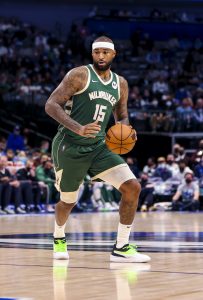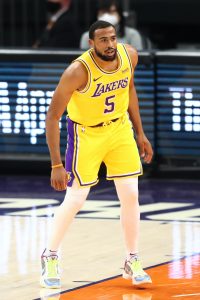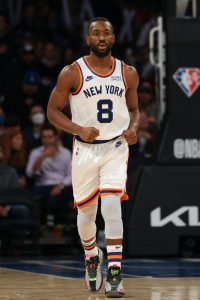Entering the new year on January 1, there were still 27 players who were signed to standard, full-season contracts but whose salaries for the 2021/22 campaign weren’t fully guaranteed.
The deadline for teams to waive those players and avoid having their full ’21/22 salaries become guaranteed was on Friday, January 7 at 4:00 p.m. CT. Although their salaries won’t technically become guaranteed until January 10, those players would still receive their full-season guarantees if they’re cut today or tomorrow, since they wouldn’t clear waivers until at least Monday.
Here’s a roundup of the decisions teams made with those 27 players:
Players who will have their salaries guaranteed:
Each player’s salary is noted here. His cap hit is identical to his salary unless otherwise indicated.
- Avery Bradley, Lakers: $2,641,691 *
- Ed Davis, Cavaliers: $2,641,691 *
- Wesley Matthews, Bucks: $1,958,495 #
- Timothe Luwawu-Cabarrot, Hawks: $1,939,350 *
- DeAndre’ Bembry, Nets: $1,939,350 *
- Gary Payton II, Warriors: $1,939,350 *
- Damion Lee, Warriors: $1,910,860
- Dennis Smith Jr., Trail Blazers: $1,789,256 *
- Jaylen Nowell, Timberwolves: $1,782,621
- Dean Wade, Cavaliers: $1,782,621
- Isaiah Hartenstein, Clippers: $1,729,217 *
- Oshae Brissett, Pacers: $1,701,593
- Moses Brown, Mavericks: $1,701,593
- Matt Thomas, Bulls: $1,669,178
- Lamar Stevens, Cavaliers: $1,517,981
- Paul Reed, Sixers: $1,517,981
- Alfonzo McKinnie, Bulls: $1,090,007 ^
- Austin Reaves, Lakers: $925,258
- Keifer Sykes, Pacers: $558,345
(*) cap hit of $1,669,178
(#) cap hit of $1,237,494
(^) cap hit of $1,016,856
All 19 of the players on non-guaranteed contracts who were retained are earning the minimum salary, so the financial impact of keeping them is relatively modest. Still, open roster spots are valuable at this time of year — at least a couple of these guys were fortunate not to be let go by a team prioritizing flexibility.
All of these decisions were reported in recent days with the exception of the Bulls keeping McKinnie. Since he played in last night’s game, he clearly wasn’t waived in time for the January 7 deadline, so we can safely assume Chicago is keeping him around.
Players who were waived before their salaries became guaranteed:
Each player’s cap hit is noted here. The team would no longer be on the hook for that cap charge if a player is claimed off waivers.
- Gabriel Deck, Thunder: $1,690,507
- Jabari Parker, Celtics: $1,068,288
- Denzel Valentine, Knicks: $902,801
- Miye Oni, Thunder: $850,331
- Kelan Martin, Pacers: $801,900
- Wayne Selden, Knicks: $785,104
- DeMarcus Cousins, Bucks: $607,285
- Gary Clark, Pelicans: $377,645
Of these eight players, only Deck was making more than the minimum salary. He would’ve earned $3,676,852 if he had survived the guarantee deadline, which is why his prorated cap hit is noticeably larger than the other players on this list, who were all earning the minimum.
Valentine and Oni were each traded before being waived, as the Lakers (who were set to acquire Valentine from Cleveland in the Rajon Rondo trade before the Knicks got involved) and Jazz avoided further increasing their projected tax bills by eating that dead money.
There were a handful of other players with non-guaranteed salaries who were waived earlier in the season. That group included Sam Dekker (Raptors), Georgios Kalaitzakis (Bucks), Alize Johnson (Bulls), and Brad Wanamaker (Pacers). Those moves didn’t go down to the wire like the others listed above, having occurred well in advance of the salary guarantee deadline.

 January 15 is the key date, with
January 15 is the key date, with  However, it also features several players whose names have already popped up in trade rumors in the months since they were signed, such as Celtics guard
However, it also features several players whose names have already popped up in trade rumors in the months since they were signed, such as Celtics guard